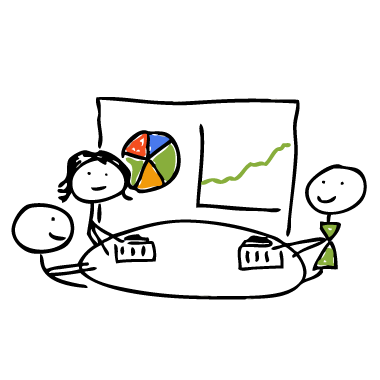
The challenge
A successful business owner was sitting on $1.2 million of cash in his business, but he was earning only 0.01% interest on the money. With interest rates at historic lows where money market accounts and bank savings account pay virtually nothing on deposits, how can an investor make a return on his cash?

What we did
The first thing we did is worked with our client to see how much, if any, of the $1.2 million of cash the business needed for operations. It was determined that the company needed $700,000 to cover upcoming expenses and liabilities, but that $500,000 was probably not needed for another year. We then transferred the $500,000 to his personal investment account (the company is an S-Corp so the profits flow through to the owner) so we would have access to a wide variety of investment and cash management options. Our analysis showed that a one year CD was paying 0.70%. At 0.70% his $500,000 would generate $3,500 in the CD. While this is certainly more than he would have made if he left the money at his bank, the CD had a one-year lock-up requirement and a penalty if he needed to access the money sooner. Instead, we spread the money over two short-term bond funds, investing $300,000 in one fund with a duration of 1.27 years and a 3.09% yield and $200,000 in the other with a slightly longer duration and higher yield.


The outcome
- The result was a big win for our client. The funds should produce over $20,000 of income in the year and also have the opportunity for appreciation.
- As an added benefit, our client can sell these and get access to the cash immediately without penalty.
These examples are for illustrative purposes only. Any strategies referenced herein do not take into account the investment objectives, financial situation, or particular needs of any individual. They should not be considered individual advice, suitability must be independently determined. Individual results will vary and may be more or less favorable than in the examples shown.

